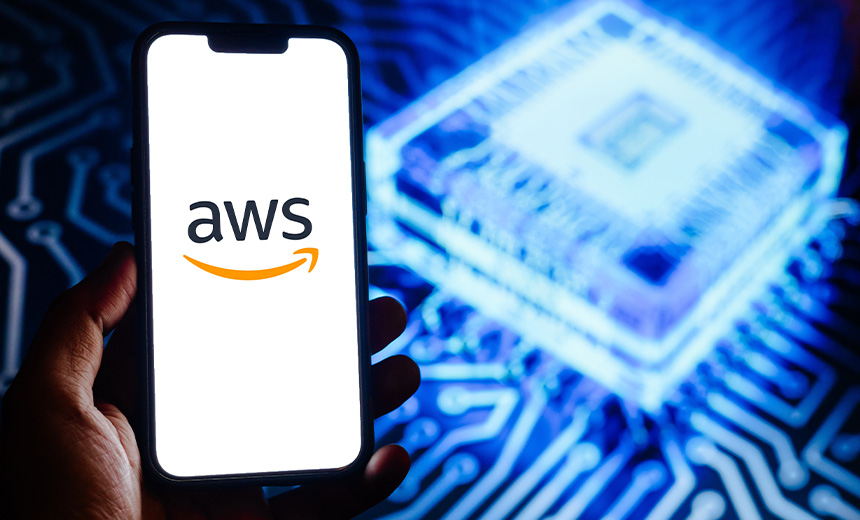What happens when everybody winds up wearing ‘AI body cams’?

The first body cams were primitive. They were enormous, had narrow, 68-degree fields of view, had only 16GB of internal storage, and had batteries that lasted only four hours. Body cams now usually have high-resolution sensors, GPS, infrared for low-light conditions, and fast charging. They can be automatically activated through Bluetooth sensors, weapon release, or sirens. They use backend management systems to store, analyze, and share video footage. The state of the art — and the future of the category — is multimodal AI. ... Using such a system in multimodal AI, a user could converse with their AI agent, asking questions about what the glasses were pointed at previously. These glasses will almost certainly have a dashcam-like feature where video is constantly recorded and deleted. Users can push a button to capture and store the past 30 seconds or 30 minutes of video and audio — basically creating an AI body cam worn on the face. Smart glasses will be superior to body cams, and over time, AI body cams for police and other professionals will no doubt be replaced by AI camera glasses. This raises the question: When everybody has AI body cams — specifically glasses with AI body cam functionality — nwhat does society then look like?
Aligning Cloud Costs With Sustainability and Business Goals

AI is poised for democratization, similar to the cloud. Users will have the choice and ability to use multiple models for numerous use cases. Future trends indicate a rise in culturally aware and industry-specific models that will further facilitate the democratization of AI. Singapore's National Research Foundation launched AI Singapore - a national program to enhance the country's AI capabilities - to make its LLMs more culturally accurate, localized and tailored to Southeast Asia. AWS is working with Singapore public organizations to develop innovative, industry-first solutions powered by AI and gen AI, including AI Singapore's SEA-LION. Building on AWS' scalable compute infrastructure, SEA-LION is a family of LLMs that is specifically pre-trained and instruct-tuned for Southeast Asian languages and cultures. WS released the Amazon Bedrock managed service to support gen AI deployments for large enterprises. It now provides easy access to multiple large language models and foundation models from AI21 Labs, Anthropic, Cohere, Meta and Stability AI through a single API, along with a broad set of capabilities organizations need to build gen AI applications with security, privacy and responsible AI.
Fortifying the Weakest Link: How to Safeguard Against Supply Chain Cyberattacks

Failures in systems and processes by third parties can lead to catastrophic
reputational and operational damage. It is no longer sufficient to merely
implement basic vendor management procedures. Organizations must also take
proactive measures to safeguard against third-party control failures. ...
Protect administrative access to the tools and applications used by DevOps
teams. Enable secure application configuration via secrets and authenticate
applications and services with high confidence. Mandate that software
suppliers certify and extend security controls to cover microservices, cloud,
and DevOps environments. ... Ensure that your systems and those of your
suppliers are regularly updated and patched for known vulnerabilities. Prevent
the use of unsupported or outdated software that could introduce new
vulnerabilities. ... Configure cloud environments to reject authorization
requests involving tokens that deviate from accepted norms. For on-premises
systems, follow the National Security Agency’s guidelines by deploying a
Federal Information Processing Standards (FIPS)-validated Hardware Security
Module (HSM) to store token-signing certificate private keys. HSMs
significantly reduce the risk of key theft by threat actors.
Are hardware supply chain attacks “cyber attacks?”
In the case of hardware supply chain attacks, malicious actors infiltrate the
supply of devices, or the physical manufacturing process of pieces of hardware
and purposefully build in security flaws, faulty parts, or backdoors they know
they can take advantage of in the future, such as malicious microchips on a
circuit board. For Cisco’s part, the Cisco Trustworthy technologies program,
including secure boot, Cisco Trust Anchor module (TAm), and runtime defenses
give customers the confidence that the product is genuinely from Cisco. As I
was thinking about the threat of hardware supply chain attacks, I was left
wondering who, exactly, should be tasked with solving this problem. And I
think I’ve decided the onus falls on several different sectors. It shouldn’t
just be viewed as a cybersecurity issue, because for a hardware supply chain
attack, an adversary would likely need to physically infiltrate or tamper with
the manufacturing process. Entering a manufacturing facility or other stops
along the logistics chain would require some level of network-level
manipulation, such as faking a card reader or finding a way to trick physical
defenses — that’s why Cisco Talos Incident Response looks for these types of
things in Purple Team exercises.
How The Digital Twin Helps Build Resilient Manufacturing Operations

The digital twin is a sophisticated tool. It must be a true working virtual
replica of the physical asset. Anything short of that means problems. To make
it all work, consider several key aspects. You will most likely need multiple
digital twins of the same physical asset. At least one digital twin should be
online most of the time, collecting data from the real world. Other copies of
the digital twin might be offline at times, but they use the real-world data
in various training situations and for optimizing the equipment and the line.
Getting data from the real world into the digital twin is one of the best and
most common uses for the Industrial Internet of Things (IIoT). The latest
digital twins are incorporating AI to help optimize the design process, learn
from previous designs and create new equipment designs. AI helps create
operator training scenarios and optimizes the equipment and production line.
AI learns from the optimization process and, even with new wrinkles thrown
into the real world, learns how to optimize the optimization process. It helps
troubleshoot the equipment, finding problems quickly, long before they become
problems.
3 tips for securing IoT devices in a connected world
Comprehensive visibility refers to an organization’s ability to identify,
monitor and remotely manage each individual device connected to its network.
Gaining this level of visibility is a crucial first step for maintaining a
robust security posture and preventing unauthorized access or potential
breaches. ... Addressing common vulnerabilities like built-in backdoors and
unpatched firmware is essential for maintaining the security of connected
devices. Built-in backdoors are hidden or undocumented access points in a
device’s software or firmware that allow unauthorized access to the device or
its network. These backdoors are often left by manufacturers for maintenance
or troubleshooting purposes but can be exploited by attackers if not properly
secured. ... One important step in secure deployment is limiting access to
critical resources using network segmentation. Network segmentation involves
dividing a network into smaller, isolated segments or subnets, each with its
own security controls. This practice limits the movement of threats across the
network, reducing the risk of a compromised IoT device leading to a broader
security breach.
Why countries are in a race to build AI factories in the name of sovereign AI

“The number of sovereign AI clouds is really quite significant,” Huang said in
the earnings call. He said Nvidia wants to enable every company to build its
own custom AI models. The motivations weren’t just about keeping a country’s
data in local tech infrastructure to protect it. Rather, they saw the need to
invest in sovereign AI infrastructure to support economic growth and
industrial innovation, said Colette Kress, CFO of Nvidia, in the earnings
call. That was around the time when the Biden administration was restricting
sales of the most powerful AI chips to China, requiring a license from the
U.S. government before shipments could happen. That licensing requirement is
still in effect. As a result, China reportedly began its own attempts to
create AI chips to compete with Nvidia’s. But it wasn’t just China. Kress also
said Nvidia was working with the Indian government and its large tech
companies like Infosys, Reliance and Tata to boost their “sovereign AI
infrastructure.” Meanwhile, French private cloud provider Scaleway was
investing in regional AI clouds to fuel AI advances in Europe as part of a
“new economic imperative,” Kress said.
Is Spring AI Strong Enough for AI?
While the Spring framework itself does not have a dedicated AI library, it has
proven to be an effective platform for developing AI-driven systems when
combined with robust AI/ML frameworks. Spring Boot and Spring Cloud provide
essential capabilities for deploying AI/ML models, managing REST APIs, and
orchestrating microservices, all of which are crucial components for building
and deploying production-ready AI systems. ... Spring, typically known as a
versatile enterprise framework, showcases its effectiveness in high-quality AI
deployments when combined with its robust scalability, security, and
microservice architecture features. Its seamless integration with machine
learning models, especially through REST APIs and cloud infrastructure,
positions it as a formidable choice for enterprises seeking to integrate AI
with intricate business systems. Nevertheless, for more specialized tasks such
as model versioning, training orchestration, and rapid prototyping,
AI-specific frameworks like TensorFlow Serving, Kubernetes, and MLflow offer
tailored solutions that excel in high-performance model serving, distributed
AI workflows, and streamlined management of the complete machine learning
lifecycle with minimal manual effort.
Top Skills Chief AI Officers Must Have to Succeed in Modern Workplace
/dq/media/media_files/OMpaIOerPybvfHFpLHM2.jpg)
Domain knowledge is obviously vital. Possessing an understanding of core AI
concepts is a must. Machine learning (ML), data analytics, and software
development are elementary requirements a capable CAIO will leverage for
specific business goals. Given the incipient stage that AI transformation is
at, candidates will have to supplement their knowledge with continuous
learning, adaptability, and initiative. Notably, a CAIO must use their
expertise to arrive at data-driven decisions—it sets a good professional apart
and highlights their capacity to troubleshoot accurately. ... A CAIO must
translate AI concepts into clear strategies, prioritizing among multiple
potential implementations based on their judgment of what will deliver the
greatest value. This involves setting concrete goals such as improved
efficiency, enhanced customer engagement, or increased employee productivity,
and devising a roadmap to achieve them. ... Beyond the technical knowledge and
strategic acumen, a powerful grasp of how business processes work within an
organisation and why they function the way they do is crucial. CAIOs must
foremost align with this culture and find ways to integrate AI within that
framework.
5 Ways to Keep Global Development Teams Productive
A significant challenge for global development teams is ensuring smooth
collaboration between different locations. Without the right tools and
processes, team members can experience delays due to time zone differences,
slow data access, or inconsistent version control systems. To improve
collaboration, development teams should implement systems that provide fast,
reliable access to codebases, regardless of location. Real-time collaboration
tools that synchronize work across global teams are essential. For instance,
platforms that replicate repositories in real-time across different sites
ensure that all team members are working with the latest version of the code,
reducing the risk of inconsistencies. ... Compliance with data protection
laws, such as the GDPR or CCPA, is also essential for companies working across
borders. Development teams need to be mindful of where data is stored and
ensure that their tools meet the necessary compliance requirements. Security
policies should be applied consistently across all locations to prevent
breaches and data leaks, which can lead to significant financial and
reputational damage.
Quote for the day:
“Without continual growth and
progress, such words as improvement, achievement, and success have no
meaning.” -- Benjamin Franklin
No comments:
Post a Comment